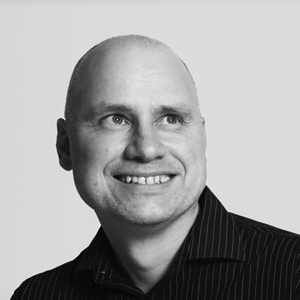- Technology
- SEE MORE
- classical
- general
- talk
- News
- Family
- Bürgerfunk
- pop
- Islam
- soul
- jazz
- Comedy
- humor
- wissenschaft
- opera
- baroque
- gesellschaft
- theater
- Local
- alternative
- electro
- rock
- rap
- lifestyle
- Music
- como
- RNE
- ballads
- greek
- Buddhism
- deportes
- christian
- piano
- djs
- Dance
- dutch
- flamenco
- social
- hope
- christian rock
- academia
- afrique
- Business
- musique
- ελληνική-μουσική
- religion
- World radio
- Zarzuela
- travel
- World
- NFL
- media
- Art
- public
- Sports
- Gospel
- st.
- baptist
- Leisure
- Kids & Family
- musical
- club
- Culture
- Health & Fitness
- True Crime
- Fiction
- children
- Society & Culture
- TV & Film
- gold
- kunst
- música
- gay
- Natural
- a
- francais
- bach
- economics
- kultur
- evangelical
- tech
- Opinion
- Government
- gaming
- College
- technik
- History
- Jesus
- Health
- movies
- radio
- services
- Church
- podcast
- Education
- international
- Transportation
- Other
- kids
- podcasts
- philadelphia
- Noticias
- love
- sport
- Salud
- film
- and
- 4chan
- Disco
- Stories
- fashion
- Arts
- interviews
- hardstyle
- entertainment
- humour
- medieval
- literature
- alma
- Cultura
- video
- TV
- Science
- en
Combining the Best of AR and VR with Varjos XR-1, featuring Niko Eiden

The human eye\nis a wonderful and complex thing, and it\u2019s a technological feat just\nto even come close to its natural revolution. Well, the folks at\nVarjo have created something that is pretty darn good at it. Alan may\nhave trouble remembering how to say their company\u2019s name, but he can\nattest to the clarity of the XR-1\u2019s display. Varjo CEO Niko Eiden\ncomes by to give us a look behind the curtain of its creation.\n\n\n\n\n\n\n\nAlan: Welcome to the XR for\nBusiness Podcast with your host, Alan Smithson. Today we have Niko\nEiden, CEO of Varjo. He\u2019s formerly held top product leadership\npositions at Microsoft and Nokia. At Nokia, Niko led a product\nprogram team in 2006-2007, and together with researchers from Nokia\nResearch Center, his team developed the basis for the optical\ntechnology that later became the Microsoft Hololens. Niko has a\nMaster\u2019s in science in aeronautical engineering. Varjo is redefining\nreality by jump starting a new era in computing. Their hardware and\nsoftware lets people seamlessly mix realities together, moving from\nthe real world to extended reality into pure virtual reality, all\nwith human eye resolution. Their new headset, XR-1, is a mixed\nreality developer device for engineers, researchers, and designers\nwho are pioneering a new reality. With photorealistic visual\nfidelity, ultra-low latency, and integrated eye tracking, the XR-1\nseamlessly merges virtual content with the real world for the first\ntime ever. If you want to learn more about Varjo, you can visit\nvarjo.com. And I want to welcome to the show, Niko. Thanks so much\nfor joining me.\n\n\n\nNiko: Thanks, Alan. Nice to be\nhere.\n\n\n\nAlan: It\u2019s my absolute pleasure.\nWe got a chance to meet at AWE this year and I got to try the XR-1,\nwhich was \u2014 oh my God \u2014 what an incredible experience. You put on\nthe headset, the pass-through cameras were as if I didn\u2019t have a\nheadset on at all, I could just see the whole world. And then all of\na sudden a car appeared in front of me; in the space I was in, there\nwas a car. Then I got in the car, and the space around me\ndisappeared, and I was in the car. And the one thing that really\nstuck out with me that blew my mind was. I was looking \u2014 it was a\nVolvo \u2014 and I remember looking at the steering wheel. And the little\nVolvo symbol in chrome was so crystal clear. It looked like a real\ncar. Let\u2019s talk about your technology and how you guys ended up at\nthis place.\n\n\n\nNiko: Sure. We really had the\ninitial vision\u2013 the founding team, we had a long background in\ndifferent augmented reality and VR devices. And we had always been\ntalking about that video see-through type of devices could actually\ncombine the best of both worlds of AR and VR devices. And every time\nyou started talking about them, somebody kind of commented basically\nthat don\u2019t bother: the latency, the lag between what you\u2019re seeing\nthrough the cameras, and what\u2019s happening in reality is gonna be too\nlong. Or the resolution is not going to be good enough, it\u2019s not\ngoing to look great. But we were in the summer of 2016, we were\nlooking at a demo and the demo was shown with the Hololens first gen\ndevice. And I got really thinking that this would be such a cool\ndemo, but it\u2019s really missing a big part of the experience, because\nit wasn\u2019t able to show the image in a photorealistic fashion. It was\na very high fidelity graphic scene that we were looking at with\nHololens and we were just thinking that this would be so much better\nwith a VR device. And combining the reality with a video see-through\ndevice could actually really work. We were a bit curious. We had some\nextra time at that point together with Urho [Konttori] \u2014 one of the\nother founders \u2014 and we built our first prototype in 24 hours, and\nthe experience was really magical. So it was a very s